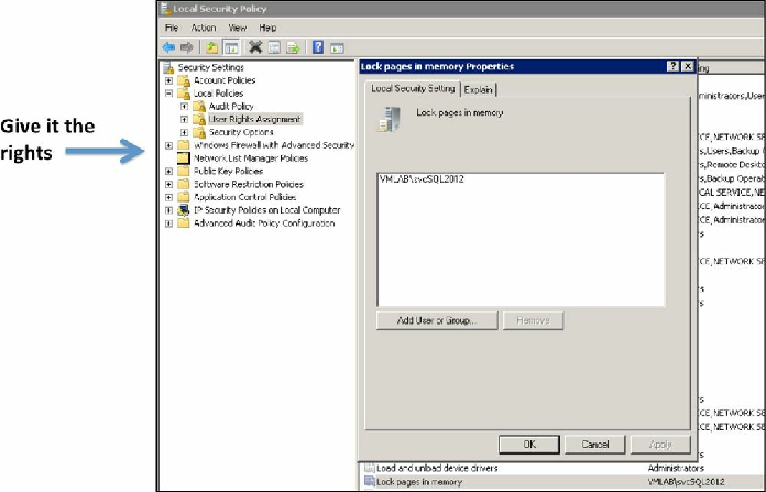Database Reference
In-Depth Information
Figure 7.10
Lock Pages in Memory rights.
At the vSphere level, it is still possible that the hypervisor could break down its large
pages into small pages, making them a candidate for transparent page sharing. This
backing of guest operating system large pages with hypervisor small pages is not
optimal and leads to the recommendation to reserve 100% of the guest virtual machine's
memory.
This combination of large pages and lock pages in memory prevents the SQL Server
buffer pool from being paged out by the Windows operating system. It should also be
noted that it prevents the balloon driver from being able to reclaim memory to hand
back to the hypervisor for use in other virtual machines. In the case of your production
database, this is desirable because the primary objective is to make sure the mission-
critical database has the resources it needs to get the job done when it needs them and is
not waiting on others. This will ensure that memory is not taken away from the database.
A database will consume as much memory as you give it, which is why we always
reserve head room for the operating system and any other applications running on that
virtual machine that may need memory. The performance of memory is magnitudes faster
than the performance of disks, and your database is just an extension of your storage.
There is a school of thought that Lock Pages in Memory is not needed with the newer
versions of the Windows operating system, which have improved memory management

